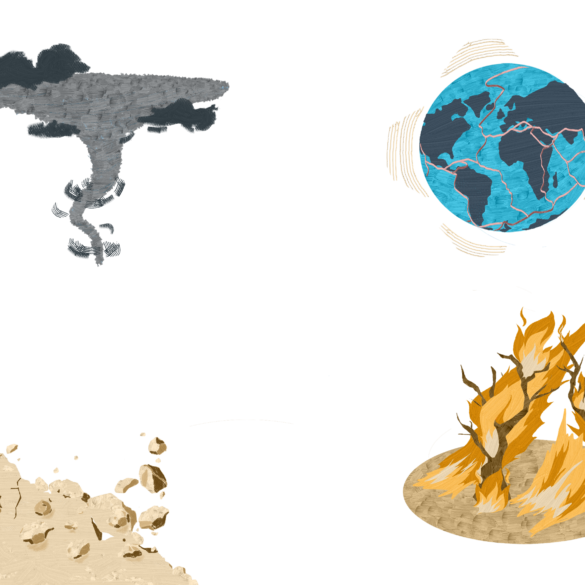The Earth is experiencing a sharp increase in natural disasters as a result of rising temperatures.
In the world’s estimated 4.5 billion-year history, our planet has never faced a crisis like the one it is up against today: a sharp rise in natural disasters as a result of manmade climate change. The National Oceanic and Atmospheric Administration (NOAA) reports the annual average of climate disasters over the last five years to be roughly 16.2 events, a little over two times higher than the 7.1 annual average between 1980-2020.
As of Oct. 8, 2021, 18 recorded climate disasters have occurred in the United States alone, as reported by the NOAA, starting with California flooding and severe weather in January. The most recent climate disaster to impact the United States was hurricane Nicholas in Texas, arriving on Sept. 14 and lasting until Sept.18, leaving more than 100,000 Texans without electricity in their homes, according to the CenterPoint Energy outage tracker. The leading risk solution company, Risk Management Solutions, estimates the U.S. total insured loss to be between 1.1 and 2.2 billion dollars due to hurricane Nicholas.
The high prices of these climate disaster events are affecting more than the U.S. economy. According to the World Economic Forum, international insurance firm Aon has announced that from the first half of 2021 alone, the world’s economy has culminated $42 billion in insured losses due to climate disasters. Scientists estimate that we will be seeing even more of these high-powered environmental events in the future as the Earth gradually begins to rise in temperature.
According to the United States Environmental Protection Agency (EPA), natural disasters, such as wildfires, hurricanes, and even rain are intensified by heat, and the Earth’s temperature has risen nearly 2 degrees Fahrenheit since the late 1800s. This average temperature is estimated to rise another two degrees Fahrenheit in the 2100s. This average temperature could rise even higher if countries do not find sustainable alternatives to combat high greenhouse gas emissions.
The IEA’s Global Energy Review 2021 reports that CO2 emissions will increase almost 5 percent this year. This will be a surge of 1.5 billion tons of emissions, the second-largest increase in history.
Although the current climate crisis may seem daunting, active participation in working towards a greener future has the power to make a change. While we might not be able to control the amount of greenhouse gas emissions our country uses, we can help in small ways by reducing our carbon footprint.
The Center for Climate and Energy Solutions recommends some steps we can take, such as reducing the amount of plastic we use and the amount of water we use daily, as well as being more conscious about not wasting food. Through small steps like these, we can help reduce our contributions to high greenhouse gas emissions and help secure a more environmental-friendly future.
Sources: The National Oceanic and Atmospheric Administration (NOAA), NOAA, CenterPoint Energy, Risk Management Solutions, World’s Economic Forum, United States Environmental Protection Agency (EPA), IEA, Center for Climate and Energy Solutions
Featured Image: Milo Hardison




